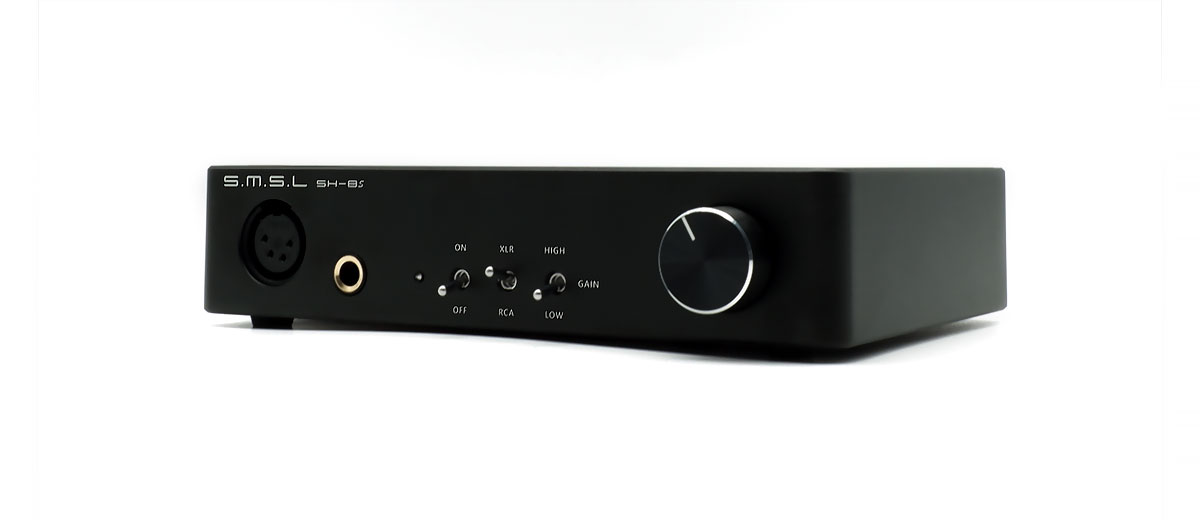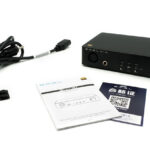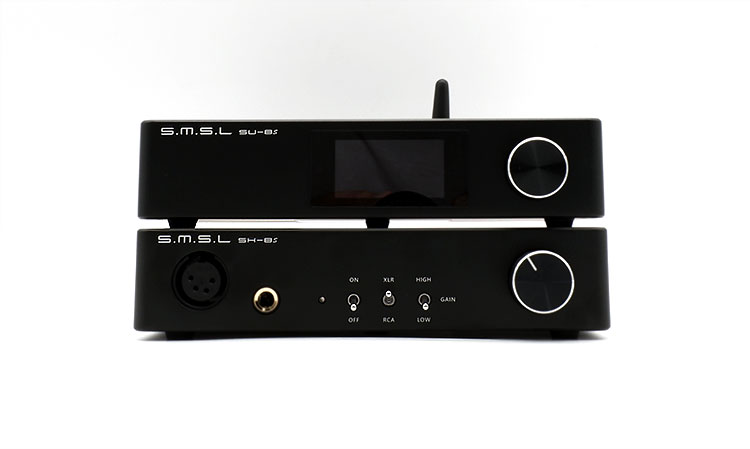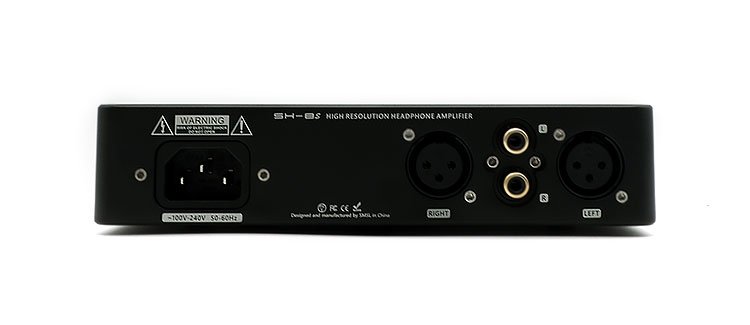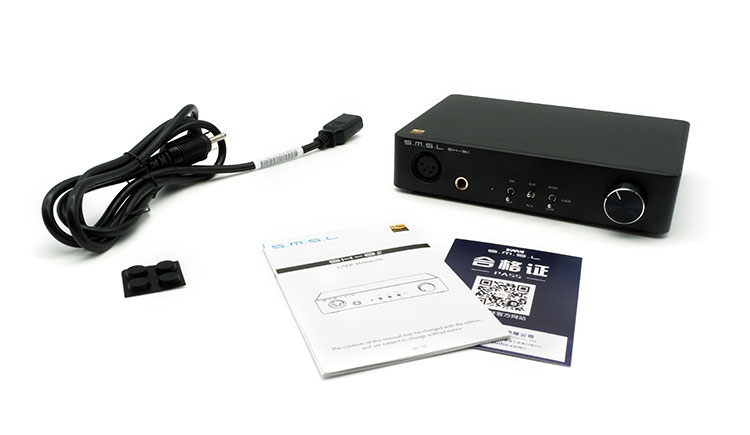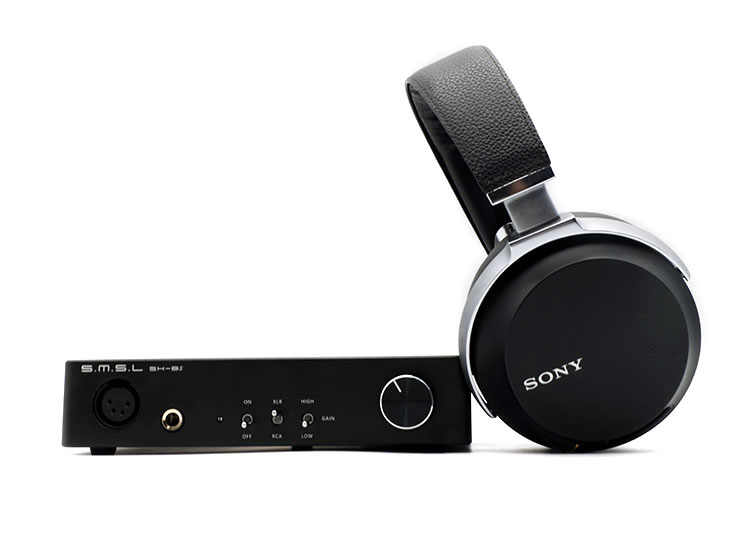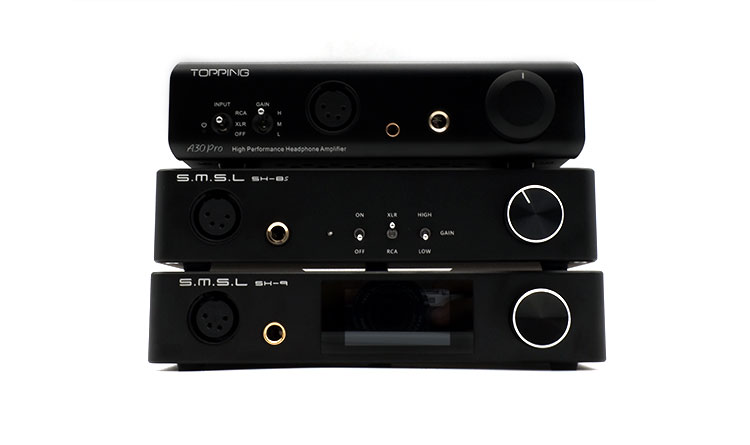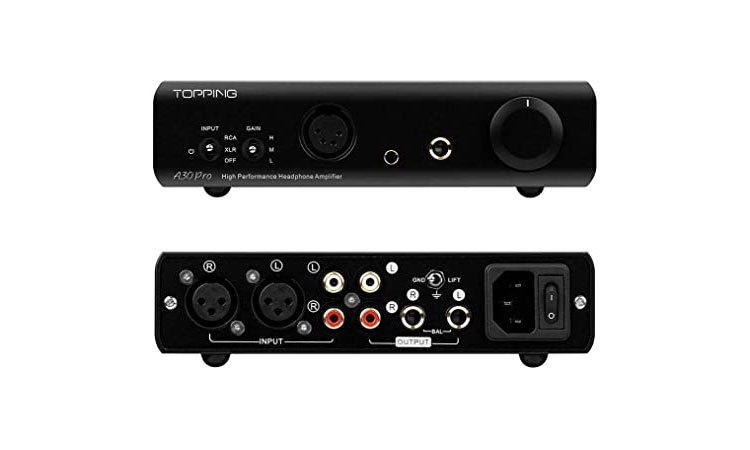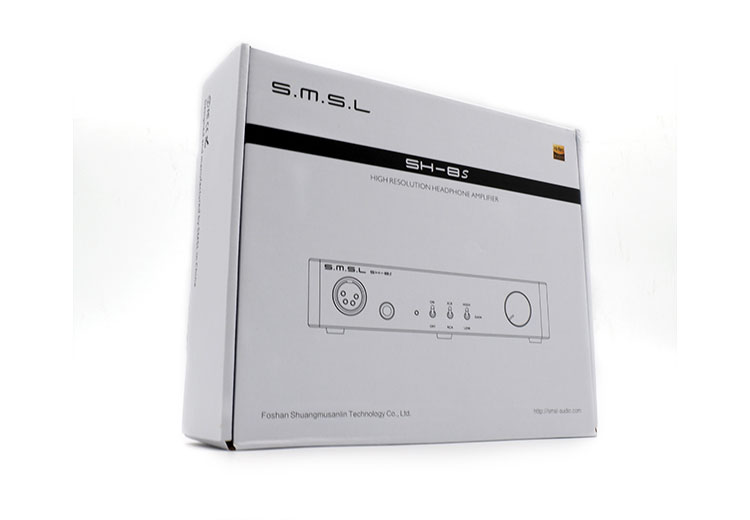The SMSL SH-8s is a new dual-gain balanced desktop headphone amplifier capable of up to 3W into a 32Ω load. It is priced at $229.99
Disclaimer: The SMSL SH-8s sent to us for this review is a sample in exchange for our honest opinion. We thank Shenzhen Audio and SMSL for giving us this opportunity.
To read more about SMSL products we have reviewed on Headfonics click here.
Note, this review follows our new scoring guidelines for 2021 which you can read up on here.
SMSL has a rich history of bringing high-quality, budget-friendly options to the mass market. With their release of the widely praised THX-based headphone amplifier the SH-9 last year, I would have believed that SMSL could rest on their laurels for a bit.
However, SMSL went straight to work on a mid-tier priced headphone amplifier that uses a topology that was designed in-house. This is the SMSL SH-8s, which utilizes SMSL’s own Precision Linear Feedback Circuit(PFLC).

Tech Highlights
The SMSL SH-8s utilizes their own PLFC which boasts of a THD of 0.00006%, numbers that rival the distortion numbers of THX AAA-based amplifiers, as well as Topping’s NFCA based amplifiers. The measured value of the noise floor is at a diminishingly low 1.3µV, so the absolute noise floor on the SH-8s is designed to be inaudible.
These low distortion numbers are paired with high-rated power output numbers. With 6W into 16Ω, and 3W into 32Ω, which are specs that are strikingly similar to SMSL’s SH-9. Power output numbers like this will allow the SH-8s to push most moderately sensitive headphones with ease.
Internally, the SH-8s is built with a high-precision low-temperature drift resistance. This ensures that temperature changes would not have adverse effects on the SH-8s. To prevent pops when the device is turned on or switched between the different input options, SMSL uses popless relays to prevent crackling noises.
Design
The SH-8s comes in a plain black aluminum chassis, and something that’s glaringly absent for those with previous experience with SMSL’s SH series of headphone amplifiers is that it lacks a screen. Instead, the SH-8s uses toggle switches and a volume knob.
The SH-8s still comes with 3 rubber feet at the bottom, similar to what I’ve seen with the SH-9 as well as the rest of the 9 series of devices from SMSL. However, the SH-8s also has additional rubber stoppers that will allow the user to add as many as 4 additional feet to ensure that the amplifier will never go off balance.
The front fascia features 2 headphone outputs, a 4-pin XLR output, and a standard ¼” output. Then to the left is the power LED, then there is a series of toggle switches and a potentiometer volume knob. The rear of the SH-8s has a standard IEC power input and the available input options.
Interface
The SH-8s doesn’t have an LCD screen, instead, it just has 3 toggle switches and a potentiometer volume knob. This makes the interface a lot simpler than SMSL’s own SH-9, which sports a 1.9” TFT screen.
The 3 toggle switches are the power switch, the input selector, and the gain switch. The potentiometer volume knob is located on the right of the switches. These controls are all tactile controls, which allows quicker access to changing any of the settings on the device.
Understandably, some find not having a screen to be a downside for the SH-8s. However, in my time with the SH-8s, I enjoyed the more tactile controls that are all conveniently located in front of the device so that any setting can be changed instantaneously.
I/O
When it comes to inputs, the SH-8s has 2 input options, which are single-ended RCA, and 3-pin XLR inputs. These inputs can then be switched between each other using the toggle switch in front.
In front, the only outputs available are the 4-pin XLR output and the ¼” headphone jack. These 2 output options are essentially the same and there is no audible difference when using either output.
The input and output options available on the SH-8s are just what I would typically find for a device like the SH-8s. But it would have been more convenient if I saw an extra 4.4mm balanced output, even if it were just internally connected to the single-ended output.
Packaging & Accessories
The SH-8s arrived in SMSL’s standard white box. This time, there is no outer sleeve, instead, the box has a picture of the SH-8s itself, as well as letters SH-8s printed in front.
Opening the box reveals a thick sheet of foam that protects the SH-8s. Inside, the SH-8s sit on foam inserts, with a cut-out for the included standard IEC power cable and additional rubber feet. Finally, there’s the manual and some warranty information, and that’s it.
The accessories aren’t much to look at, but I’m happy to see that the box provides ample protection for when the amplifier is in storage and transport.
Sound Impressions
When I first listened to the SH-8s, it seems generally neutral but it has a slight bright tilt. The bass reaches down low and is still present while being slightly rolled off. The mid-bass on the other hand sounds slightly thicker and elevated comparatively.
However, the mid-bass has a flat and dry quality to it. Drum hits are textured, but each hit sounds slightly blunted and dispersed while having the correct amount of volume and details.
Vocal Range
The vocal range is very detailed and textured and is a touch more forward and a hair warmer than what can be considered clinically accurate. Midrange instruments such as guitars sound very singular and plucked but generally end up being imbued with a touch of brightness that gives each instrument some brilliance.
Instrumental Timbre
Piano tracks like the ones rendered by Yiruma tend to have a brighter tilt that lends a bit more clarity and brilliance with each keystroke
Cymbal hits have a crystalline quality to them while having a good sense of control. This results in making each cymbal hit sound very distinct. When it comes to treble extension, the SH-8s has a lot of it, and it won’t be shy about showing it off.
Staging
Because of the airier presentation of the SH-8s, it immediately creates a very expansive soundstage. Images generally play on the more intimate side, but images are directionally quite accurate.
So the images formed play around within the more intimate space. Instruments are properly separated in front and take distinct positions in front. However, instrument separation is not as spaced out in terms of depth.
With the more extended sense of air and the slight treble uptick, the SH-8s tends to play quite loud. This ends up making orchestral tracks that have a wide dynamic range sound slightly more compressed, making it feel louder than it normally should.
Synergy
Power
With the amount of power on the SH-8s, there’s no doubt that it can power most moderately hard-to-drive headphones. In fact, all my headphones never required me to turn on the high gain setting on the SH-8s.
The 420Ω impedance of the ADX5000 only required for me to go to 12 o’clock on the volume knob before it reached the loudest comfortable listening levels for me. My planar magnetic driver headphones, like the LCD-X and the Ananda, didn’t even need me to go past 11 o’clock on the dial.
On the other side of the spectrum, easier to drive IEMs, such as the FiiO FH3 can still be driven by the SH-8s. MY comfortable listening levels for most IEMs were pegged at around 8:30 on the volume knob.
This allowed the amp to stay above any channel imbalance that it may have at the lowest end of the potentiometer. Most importantly, there is no hiss even when the volume knob is turned up.
Pairings
SMSL SU-8s
The default choice for the DAC to be paired with the SH-8s is its companion DAC, the SU-8s. Paired with my Sony MDR-Z7, this pairing allowed the Z7 to shine. The Z7’s warmer and more lush character is accentuated by the SH-8s/SU-8s stack’s textured and slightly warm midrange. This pairing also gave the Z7 a much-needed touch of brightness.
This pairing also allowed for a more rounded drum hit that accentuates the SH-8s slightly more blunted drum hits. With the Z7 being a closed-back headphone, the sense of air that is introduced by the SH-8s allows the Z7 to be a bit more expansive. The pairing between the Z7 and the SH-8s is synergistic and brings out the best qualities of both the headphone and the amplifier.
SMSL SU-9
The other pairing that I tried with the SH-8s is the slightly more expensive DAC, the SU-9. This pairing worked best with my Audeze LCD-X. Although this pairing resulted in a slightly subdued sub-bass response, the sense of attack that’s already apparent with the LCD-X is magnified even further.
This also slightly elevates the midrange on the LCD-X, allowing the LCD-X to present a fuller and slightly more euphonic vocal range.
With the slightly brighter treble tilt, this pairing allowed the LCD-X to have a more expansive sense of space. However, when it comes to dynamic range, the pairing created the illusion that the LCD-X is playing louder most of the time.
Topping D30 Pro
This pairing actually makes quite a bit of sense, even if the D30 Pro is the direct competitor of the SH-8s’ companion DAC. The D30 Pro is has a slightly more rolled-off upper treble response.
This balances out the slightly more energetic air frequencies on the SH-8s. The mid-bass region on the D30 Pro is a bit drier, while the one on the SH-8s tends to be a bit blunted. This results in a more rounded and naturally impactful bass response.
Combining these attributes with the HD600’s more euphonic midrange, allowed the combination to make for a more neutral experience. The HD600’s slightly more intimate presentation is slightly expanded by the SH-8s’ upper treble uptick, while the entire combination never leans towards exceedingly bright.
The more fleshed-out layering on the HD600 also allows the D30 Pro and SH-8s to have a bit more image separation than on most other headphones.
Select Comparisons
SMSL SH-9
When I heard about the SH-8s, I thought that it’s a dialed-down version of the SMSL’s SH-9. However, SMSL didn’t just take an SH-9 and replaced the screen with a bunch of toggle switches. There is a substantial change internally as well.
Design
The chassis of the SH-8s looks similar to the SH-9 though, and dimensionally they are also very similar, except that the SH-8s is about 10mm shallower. They even have the same 3 rubber feet at the bottom.
However, the SH-8s is sent over with additional rubber feet that can be stuck on by the user. So those who are a bit peeved by the 3-foot configuration can rest easy.
The available inputs and outputs of both amplifiers are the same, and practically speaking, the main physical difference is the removal of the screen from the SH-9. The screen is then replaced by the toggle switches, and a physical potentiometer, instead of the resistor ladder volume control on the SH-9.
Personally, I enjoyed the physical toggle switches and the potentiometer volume knob on the SH-8s, because it makes controls and adjustments a bit quicker.
Internally, there are 2 main differences between the 2. The first is that the SH-9 doesn’t use SMSL’s proprietary PLFC circuit, instead, it uses THX AAA 888 chips for the amplification stage. Also, the SH-9 uses a resistor ladder volume control, which offers a more accurate channel balance even at the lowest volume setting.
While there are differences in the chipset used, the 2 amplifiers have the same rated power outputs. So the SH-8s is equally capable of driving the same headphones that the SH-9 can.
Performance
The fact that both the SH-8s and the SH-9 come from SMSL, and their specs on paper look very similar makes me think that these 2 would probably sound the same. Listening to the 2 amplifiers though, I was surprised to find out how different the 2 amplifiers turned out to be.
The bass extends equally far down into the sub-bass, but the bass tends to be a touch more forward with the SH-8s. When it comes to clarity though, the SH-9 ends up delivering a slightly tighter bass line, where drum hits have a more hollowed texture, and bass lines end up being more fleshed out.
However, when it comes to the attack of each drum hit, the SH-8s’ heavier hits have a bit more impact with each hit. While the SH-9’s vocal range is equally accurate and textured, it ends up slightly colder when compared to the SH-8s.
With the brighter tilt of the SH-8s, the SH-9 has a markedly more controlled treble response, which allows it to be more forgiving of tracks that may tend towards sibilance. The SH-8s is very capable given the right source material and upstream DAC though.
Imaging
One thing that’s immediately apparent at first listen is that the SH-9 is a bit more closed in. While images are placed in appropriate positions, the SH-8s ends up being a bit flatter when compared to the SH-9’s more spaced-out imaging presentation.
With orchestral tracks that require a larger dynamic range, the SH-9 tends to depict the gentler passages more softly, and the more exciting passages with a bit more gusto.
I am very surprised that it isn’t that hard to tell the 2 amplifiers apart. While on paper, their specs are very similar, SMSL’s own PLFC amplifier technology is very different from the THX AAA technology that they used in their SH-9.
Topping A30 Pro
Design
With the absence of a screen, and having a few toggle switches, the 2 devices look quite similar. But with the A30 Pro priced at $120 higher, could the SH-8s compete?
Similar to the SH-8s, the A30 Pro also has both a ¼” single-ended output, as well as a 4-pin XLR headphone output. However, the A30 Pro also has a 4.4mm pentaconn connection in front. At the back of the device, the A30 Pro also has some output ports that are just passthrough ports that short the corresponding outputs when the device is off.
Interacting with both devices is also a similar experience, where most of the interaction is done using toggle switches. However, the A30 Pro has 3-way toggle switches, which means that the on and input selection is combined in 1 switch, and there are 3 gain stages instead of 2.
This allows for finer control over the volume output on the A30 Pro. However, both devices have low enough distortion to comfortably drive IEMs, so in reality, the 2 gain stages on the SH-8s is all that’s practically needed.
Aside from the usual controls in front, the A30 Pro also features a ground/lift switch at the back that can be used to eliminate ground loops. The A30 Pro also has a physical power switch that disconnects the A30 Pro from the mains power when not in use.
The chassis of both devices are made with aluminum, so it would serve as a heat sink if the internals starts heating up. However, the A30 Pro’s chassis has a lot of holes for added ventilation. This turns out to be a necessity though since the A30 Pro heats up quite a bit more than the SH-8s.
Technical
Power numbers start off similarly, with a rated power output of 6W into 16Ω on both amplifiers. However, the A30 Pro maintains a 5.5W power rating at 32Ω, while the SH-8s drops off to 3W at the same rating. Real-life tests show me that both amplifiers have enough power to run any of my headphones, so I’m not too worried about the power numbers.
Aside from the power numbers, of course, the 2 amplifiers utilize different technologies for the amp stages. The A30 Pro uses Topping’s own NFCA(nested feedback composite architecture), while the SH-8s serves as SMSL’s debut effort with their own PLFC architecture.
Performance
Both amplifiers easily powered all the headphones in my collection, including the ADX5000, and the easy-to-drive planars, Ananda. On the flip side, both amplifiers are also quiet enough to power even sensitive IEMs, so noise floor never becomes a problem.
The bass on both amplifiers reaches down equally deep into the sub-bass region. However, the A30 Pro manages to take a bit more control over the bass notes where drum hits end up with a bit less sustain and a bit more texture. The attack of each bass note is a bit more prominent with the SH-8s, so it’s really a matter of preference.
The vocal range is more euphonic on the A30 Pro, despite the A30 Pro remaining relatively accurate. The instrument timbre is a bit brighter but fuller on the SH-8s, where there is a good sense of body with notes from guitars or pianos. However, there is more edginess than the A30 Pro’s more subdued presentation.
Cymbal hits tend to be equally crystalline, however, there is a bit less splash with the A30 Pro. The A30 Pro also ends up sounding more rolled off whereas the SH-8s is airier with more headroom.
The directionality of images formed within the soundstage is equally accurate, where neither amplifier introduces any dead spots even when there are sounds that pan from left to right. The images formed tend to be a bit tighter on the A30 Pro with better layering.
The A30 Pro also has a gentler dainty presentation with instruments such as a violin being played in quieter passages. However, when it comes to the emotional impact of crescendos, the A30 Pro doesn’t do much better than the SH-8s.
Our Verdict
My first impression when I heard about the SH-8s is that it’s a stripped-down version of the SH-9. They just removed the screen and the fancier resistor ladder volume control and made an amp out of it. However, the SH-8s is the debut of SMSL’s PLFC amplifier circuit, and from what I hear with it, it sounds promising.
While the SH-8s has a touch more air than I’m used to, it makes it the amplifier that is more revealing of the flaws of the upstream gear or the mastering of the music itself.
When fed with a good DAC and a properly mastered track, the SH-8s delivers an enjoyable overall presentation with its punchy bassline, slightly euphonic midrange, crystalline treble response, and an expansive soundstage that allows the music to breathe and come to life.
SMSL SH-8s Specifications
- Inputs: Balanced x1, Unbalanced x1
- Outputs: Balanced x1, 6.35mm x1
- Output Power: 6W x 2 (16 Ω),3W x 2 (32 Ω)
- SNR: 136dB
- Output Noise: 3uV
- THD+N: – 123dB, 0.00006% (1kHz, 32Ω)
- THD+N: -120dB, 0.00013% (20-20kHz , 32Ω, -1dB)
- THD: <-125dB, 0.00006%
- Input Impedance: 47kΩ
- Output Impedance: Near 0 Ω
- Frequency Response: 20Hz – 500kHz(-3dB)
- Gain: Low(0dB), High(+17.5dB)
- Size: 139.5x41x184.4mm (WxHxD)
- Weight: 0.77kg

